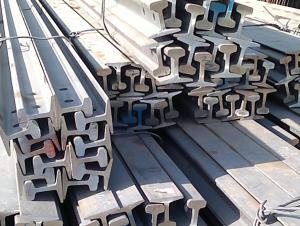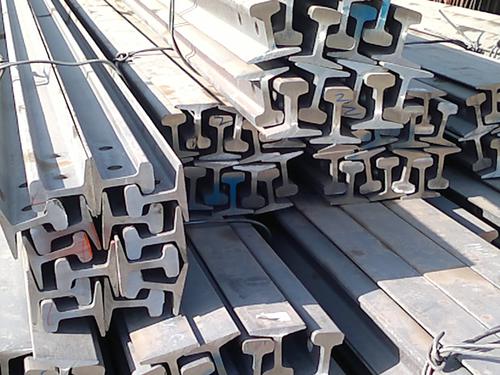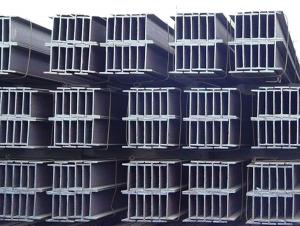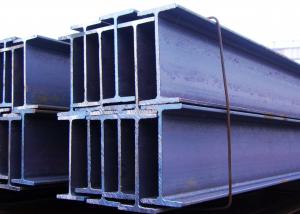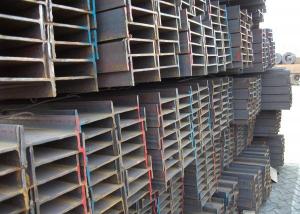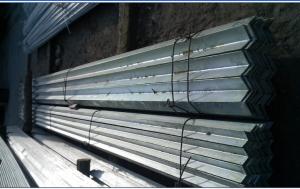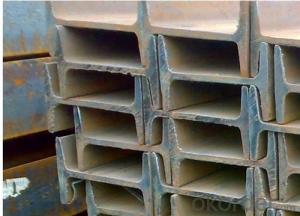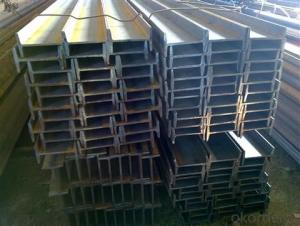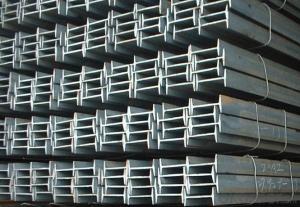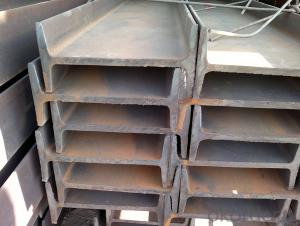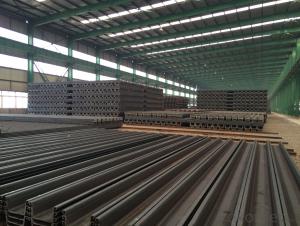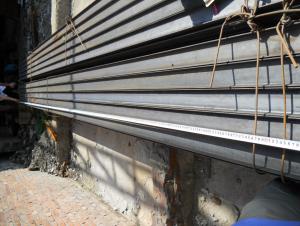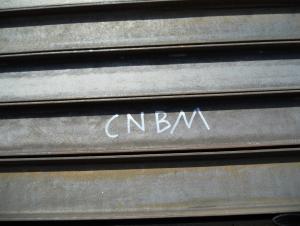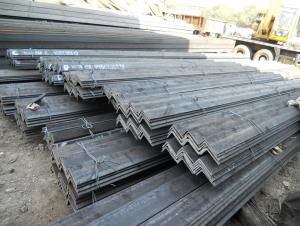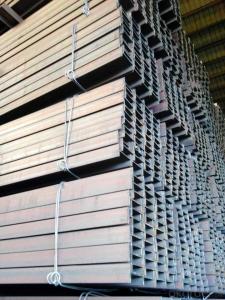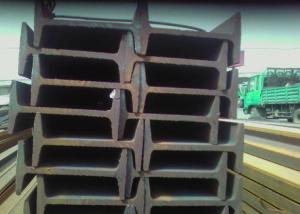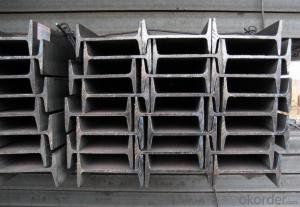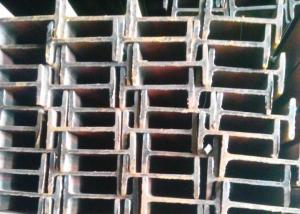HR Steel Rail Light Made in China with High Quality and Competitive Prices
- Loading Port:
- Tianjin
- Payment Terms:
- TT or LC
- Min Order Qty:
- 25 m.t.
- Supply Capability:
- 100000 m.t./month
OKorder Service Pledge
OKorder Financial Service
You Might Also Like
Product Description:
OKorder is offering HR Steel Rail Light Made in China with High Quality and Competitive Prices at great prices with worldwide shipping. Our supplier is a world-class manufacturer of steel, with our products utilized the world over. OKorder annually supplies products to European, North American and Asian markets. We provide quotations within 24 hours of receiving an inquiry and guarantee competitive prices.
Product Applications:
HR Steel Rail Light Made in China with High Quality and Competitive Prices are ideal for structural applications and are widely used in the construction of buildings and bridges, and the manufacturing, petrochemical, and transportation industries.
Product Advantages:
OKorder's HR Steel Rail Light Made in China with High Quality and Competitive Prices are durable, strong, and resist corrosion.
Main Product Features:
· Premium quality
· Prompt delivery & seaworthy packing (30 days after receiving deposit)
· Corrosion resistance
· Can be recycled and reused
· Mill test certification
· Professional Service
· Competitive pricing
Packaging & Delivery:
Packaging Detail: products are packed in bundle and then shipped by container or bulk vessel, deformed bar is usually naked strapping delivery, when storing, please pay attention to moisture proof. The performance of rust will produce adverse effect.
Each bundle weight: 2-3MT, or as required
Payment term: TT or L/C
Delivery Detail: within 45 days after received advanced payment or LC.
Label: to be specified by customer, generally, each bundle has 1-2 labels
Trade terms: FOB, CFR, CIF
FAQ:
Q1: Why buy Materials & Equipment from OKorder.com?
A1: All products offered byOKorder.com are carefully selected from China's most reliable manufacturing enterprises. Through its ISO certifications, OKorder.com adheres to the highest standards and a commitment to supply chain safety and customer satisfaction.
Q2: How do we guarantee the quality of our products?
A2: We have established an advanced quality management system which conducts strict quality tests at every step, from raw materials to the final product. At the same time, we provide extensive follow-up service assurances as required.
Q3: How soon can we receive the product after purchase?
A3: Within three days of placing an order, we will begin production. The specific shipping date is dependent upon international and government factors, but is typically 7 to 10 workdays.
Images:
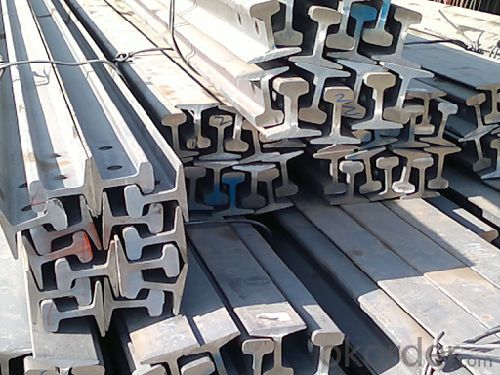
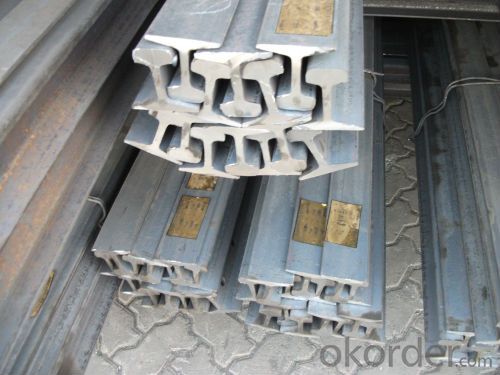
- Q: How do steel I-beams perform in terms of earthquake resistance for renovations?
- Steel I-beams are known for their exceptional strength and durability, making them an excellent choice for earthquake-resistant renovations. The shape of the I-beam provides a high strength-to-weight ratio, allowing it to withstand the lateral forces generated during an earthquake. During an earthquake, buildings experience strong shaking, which can lead to structural damage and collapse. However, steel I-beams have the ability to flex and absorb the energy from the seismic waves, reducing the impact on the overall structure. This flexibility allows them to withstand the dynamic loads and prevent catastrophic failure. In addition to their inherent strength, steel I-beams can be further reinforced to enhance their earthquake resistance. This can be achieved by using thicker and higher-grade steel, adding additional bracing or cross-members, or implementing various structural engineering techniques such as moment frames or shear walls. These reinforcements increase the overall rigidity and stiffness of the structure, minimizing the deflection and displacement during an earthquake. Moreover, steel I-beams have the advantage of being non-combustible, which adds an extra layer of safety in case of fire-induced earthquake damage. Unlike other materials, such as wood or concrete, steel does not burn or degrade when exposed to high temperatures, ensuring the structural integrity remains intact. It's important to note that the earthquake resistance of a renovated structure depends on various factors, including the design, quality of construction, and adherence to building codes and regulations. Engaging experienced structural engineers and contractors who specialize in seismic retrofitting is crucial to ensure the steel I-beam renovations are carried out correctly and effectively. Overall, steel I-beams are a reliable and efficient choice for earthquake-resistant renovations. Their inherent strength, flexibility, and ability to be reinforced make them a popular solution to enhance the seismic performance of existing structures.
- Q: What are the different types of steel coatings used on I-beams?
- There are several different types of steel coatings used on I-beams, including galvanized coatings, epoxy coatings, and polyurethane coatings. These coatings provide various levels of protection against corrosion, abrasion, and environmental factors, ensuring the longevity and durability of the I-beams in different applications.
- Q: What is the supply length of 30# I-beam?
- The supply length of 30# I-beam is usually 12 meters. The length of the steel bar is generally 9m and 12m; the length of the I-beam and H section steel is generally 12m; the factory length of the angle steel is generally 6 meters; the common length of the channel steel is 6 meters, /8 meters and /9 meters.
- Q: Can steel I-beams be used in curved structures?
- Yes, steel I-beams can be used in curved structures. They can be manufactured in curved shapes to accommodate the design requirements of curved constructions.
- Q: Can steel I-beams be used for overhead crane support?
- Indeed, overhead crane support can be achieved by employing steel I-beams. These I-beams are extensively utilized in construction and industrial settings owing to their impressive strength and ability to bear heavy loads. They are perfectly suited for accommodating substantial weights while offering the essential stability and structural integrity essential for overhead crane systems. Tailoring the precise size and configuration of the I-beams would naturally be contingent upon the load capacity and span specifications of the overhead crane. Furthermore, it is crucial to guarantee the proper installation and support of the I-beams in order to withstand the dynamic loads and forces exerted by the crane.
- Q: How many kilograms can I hold from the window for 2 meters of I-beam?
- I-beam is mainly divided into ordinary I-beam, light I-beam and H steel three. I-steel whether ordinary or light, because the section size are relatively high and narrow, so the moment of inertia of section two of the spindle is larger, so it only can be directly used in the web plane bending member or the composition of lattice stress components. It is not suitable for the axial compression member or the bent member perpendicular to the web plane, which has great limitations in its application. H section steel is a kind of economical and economical surface profile (other cold bending thin wall steel, pressed steel plate, etc.). Because of the reasonable cross-section shape, they can make steel more effective and improve the bearing capacity. Unlike ordinary I-beam, the flange of H steel is widened, and the inner and outer surfaces are usually parallel so that it is easy to connect with high strength bolts and other components. The size of the series is reasonable, the model is complete, easy to design and use.
- Q: How do you calculate the bearing capacity of a steel I-beam?
- The bearing capacity of a steel I-beam can be calculated by considering factors such as the material properties of the beam, its dimensions, and the load it is expected to support. This calculation typically involves determining the maximum bending moment and shear force that the beam can withstand based on its cross-sectional properties and the applied load. Additionally, factors such as the beam's yield strength and safety factors are taken into account to ensure the structural integrity and reliability of the beam under the given load conditions.
- Q: Can steel I-beams be used for pedestrian bridges or walkways?
- Indeed, pedestrian bridges or walkways can utilize steel I-beams. Given their robustness and ability to bear significant loads, steel I-beams are frequently employed in construction. Their capacity to sustain heavy weights renders them appropriate for pedestrian bridges. Furthermore, steel possesses durability, enabling it to endure diverse weather conditions and enjoy a prolonged lifespan. Consequently, steel I-beams can be tailored to meet the precise demands of pedestrian bridges or walkways, consequently guaranteeing safety and stability for pedestrians.
- Q: Can steel I-beams be used in both residential and commercial construction?
- Yes, steel I-beams can be used in both residential and commercial construction. They are commonly used in both types of projects due to their high strength-to-weight ratio, durability, and ability to support heavy loads.
- Q: Can steel I-beams be used in transportation or infrastructure renovation projects?
- Yes, steel I-beams can be used in transportation or infrastructure renovation projects. Steel I-beams are commonly used in construction due to their strength and durability. They are often used in bridges, highways, and other transportation infrastructure projects where a strong and stable support structure is required. Steel I-beams can also be used in the renovation of existing infrastructure, such as reinforcing or replacing deteriorating bridges or overpasses. Their versatility and load-bearing capabilities make them an ideal choice for transportation and infrastructure projects.
Send your message to us
HR Steel Rail Light Made in China with High Quality and Competitive Prices
- Loading Port:
- Tianjin
- Payment Terms:
- TT or LC
- Min Order Qty:
- 25 m.t.
- Supply Capability:
- 100000 m.t./month
OKorder Service Pledge
OKorder Financial Service
Similar products
Hot products
Hot Searches
